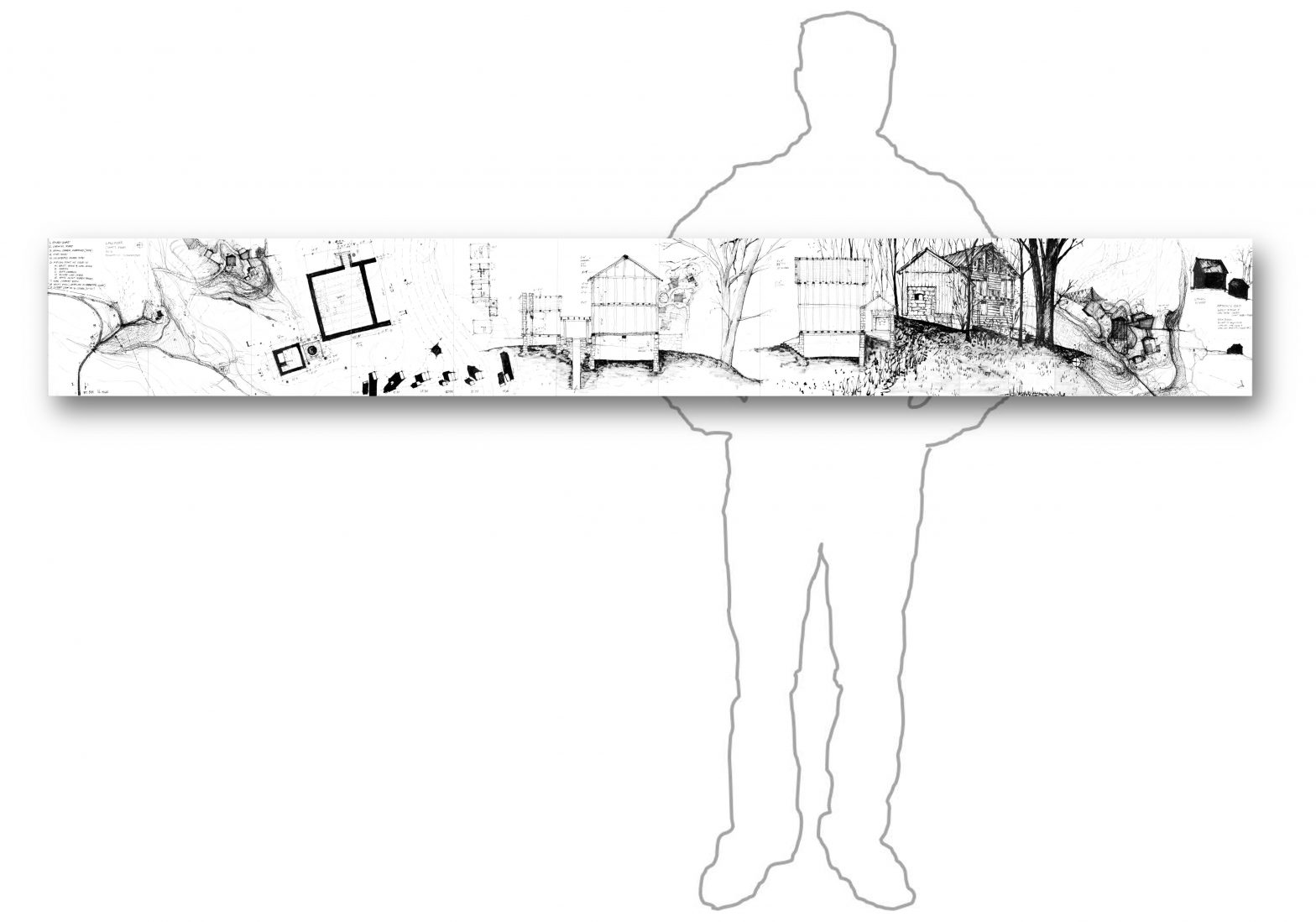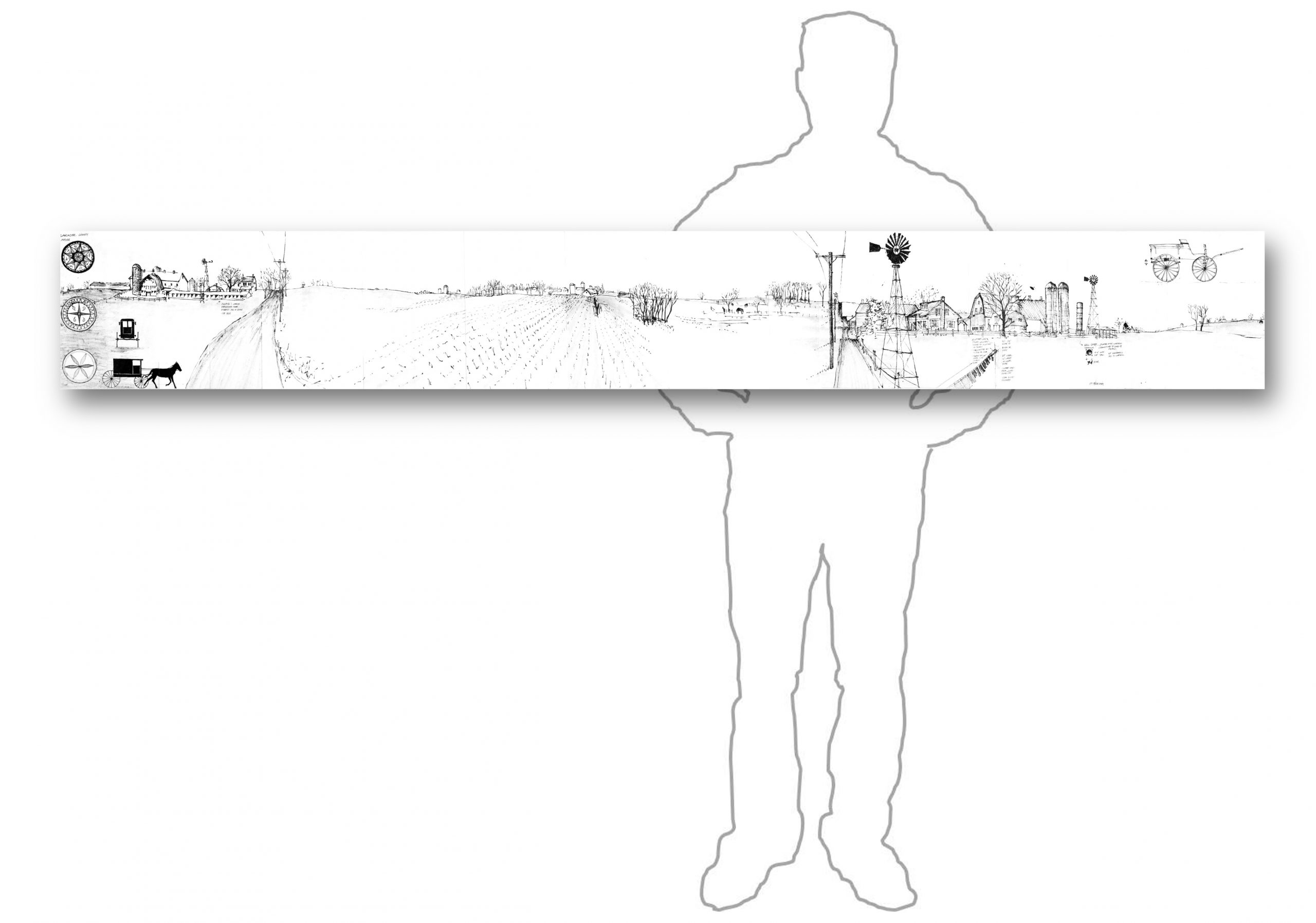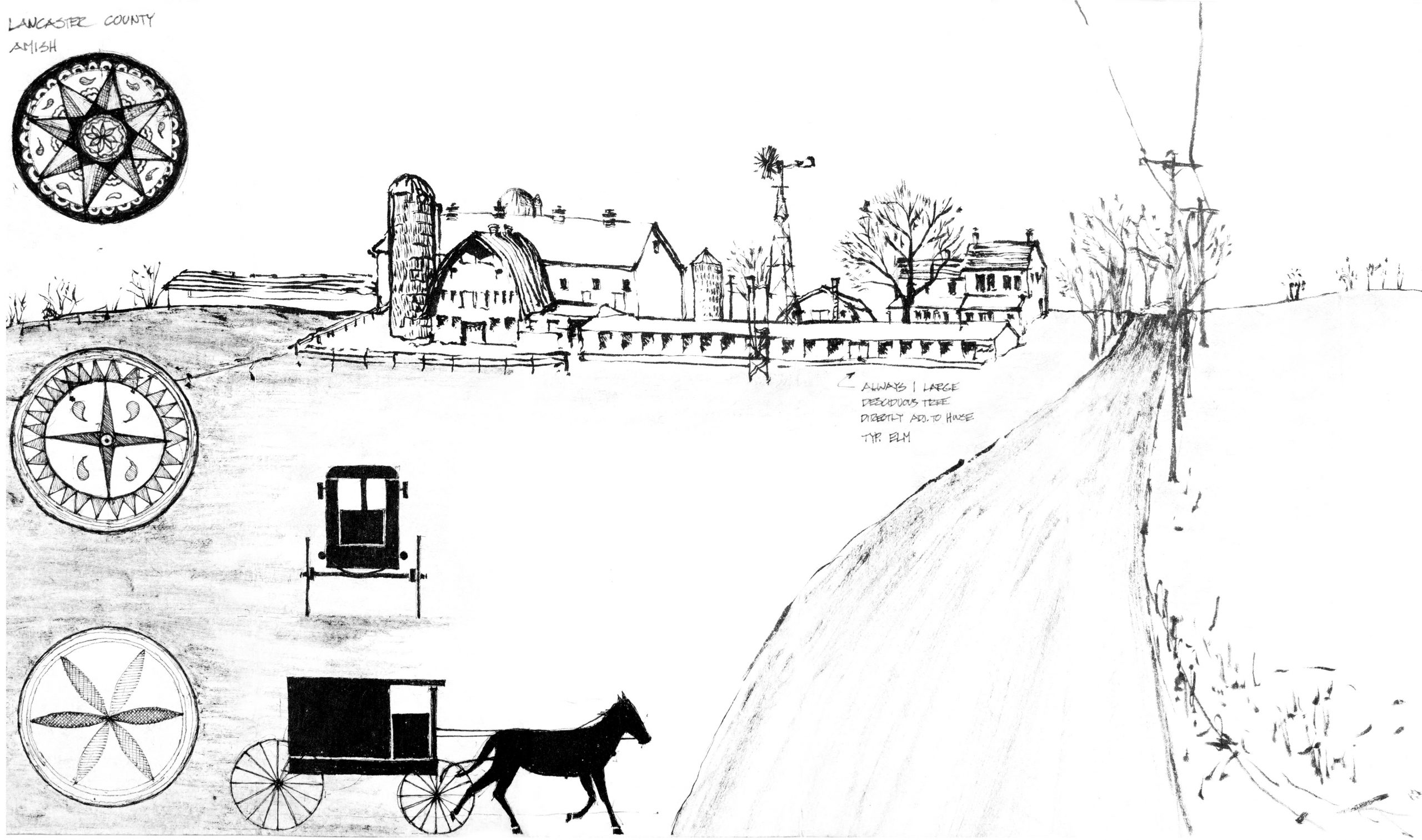7.12.USA-4-Horizontal-with-Figure – Christmas tree farm Highlights Relevant to Sustainable Design:
Benefit from engaging in a process, with results that may exceed your expectations.
This is an old house on my grandparents’ farm that covers a couple of hundred acres near Brickerville, Pennsylvania. Brickerville is past Lititz on the drive out from Lancaster. The area is steeped in American history, in part because the Julius Sturgis Pretzel Bakery in Lititz is the first commercial pretzel bakery in America, founded in 1861. Each year, we would plant some more Christmas trees, and about seven years later, we had an incredible collection of trees that were ready for harvest and display in the living rooms of our house in Washington, DC, my grandparents’ house, where we spent Christmas, and my aunt’s and uncle’s houses. Each year, my uncle would help maintain the trees and clear the underbrush, especially when they were young and more vulnerable. I have a crystal-clear memory of hiking up through the woods to the clearing on the year of the first harvest.
Pennsylvania does not have indigenous evergreen pine trees, so in the fall and winter, the woods are largely devoid of foliage, except for the occasional Pennsylvania mountain laurel that grows no taller than head height. The leaves of the red and white oak trees and the maple, walnut, and birch trees have mostly fallen. Imagine my walk through the brown woods at age twelve, with saw in hand. I am wearing my grandfather’s hunting jacket, which was then still too big for me and draped down to my knees. Each year, we have trekked up to check on the tree growth on the day after Thanksgiving. I have waited to see the trees that I had helped plant grow tall enough to cut and bring home. One year, I turn the corner in the woods, and the morning sun has washed across the clearing. I stop and see the most beautiful emerald forest of pine, spruce, and fir trees. Bigger than life, the trees unfold row after row for as far as I can see. Victory! Now, my brother and I have the fun challenge of picking the absolute best, most symmetrical, perfect Christmas tree to bring back to my grandmother. These wild trees were not pruned, so they were mostly asymmetrical.
The tree cutting and transport was an equally fun process. My grandfather had a 1979 Ford Bronco that was bright yellow. It rumbled and roared in four-wheel drive like a military vehicle, and it smelled like fresh-cut firewood … now pine needles. As I prepared these drawings at the woods in my midtwenties, I would see the trees, some of which had grown to over thirty feet tall. We had continued to plant more trees each year so that we staggered the harvests. At the holidays, when I see the first Christmas tree stand setups near our house outside of Philadelphia, I cannot help but remember seeing our emerald forest in the brown woods on the first harvest.
This is an example of a very narrow and seemingly small benefit from engaging in a specific sustainability process, but the memory is large and may last a lifetime. For readers that have school-age children or for educators, this description may inspire projects that build meaningful memories. Even planting a single tree in the backyard or at school has the ability to mark time and enrich the lives of the next generation.
Author and illustrator: Charlie Szoradi is an architect, inventor, and the CEO of Independence LED Lighting. He writes about many other topics related to agriculture, like the Christmas tree farm and sustainable farming, through his extensive travels around the world.
If you have found this posting online, it is an excerpt from Mr. Szoradi’s book Learn from Looking that served as the inspiring seed content for this drawing share resource. For additional drawings and insights on Christmas tree farm projects with children, we hope that you enjoy exploring LearnfromLooking.com. You can search via general terms such as sustainability as well as narrower terms such as Christmas tree farm and indigenous evergreens.
Commercial Christmas tree farm operations have growing competition with the “fake” plastic trees. Instead of going to a Christmas tree farm to cut a tree with your family or buying one from a store that has purchased trees, you can now choose from a broad range of fake options. The environmental advantage of buying a fake tree is the longevity and the reduced CO2 emissions. You make one trip to buy the fake tree, and save the emissions from the transportation from the Christmas tree farm to the store and also from the chain saw used at the Christmas tree farm each year. Certainly, one advantage of a tree grown on a Christmas tree farm is the scent that is so memorable for the holidays!




heard your post on google and checked out several of your early posts. Continue with the very good articles. Ill probably be by again to read more, thanks for the info! If you have a chance check out my website. It’s a work in progress, but I believe that someday it will have almost as good of content as yours.